As we embrace 2025, the living room is evolving into a hub of style, sustainability, and technology. This year’s trends focus on balancing modern innovation with timeless aesthetics, all while emphasizing personal expression. Let's explore how color, materials, lighting, technology, and space utilization are shaping the living room of the future.
- 🔥 Color Selection: Embracing Earthy Warmth
- Material Selection: Natural and Sustainable
- Lighting Selection: Layered and Adaptive
- Technology Integration: Smart and Seamless
- Space Utilization: Multifunctional and Flexible
- Personal Expression: Curated and Characterful
- Sustainability and Mindfulness in Design
- Conclusion: A Vision for the Living Room of 2025
💡Tip: This post may contain affiliate links. We may earn a commission if you make a purchase through these links, at no extra cost to you.
Color Selection: Embracing Earthy Warmth
Living room color trends revolve around fostering serenity and warmth. Earthy tones such as terracotta, taupe, muted greens, and soft grays dominate, drawing inspiration from the natural world. These colors are versatile, making them suitable for both minimalist and maximalist styles.
However, it’s not just about muted shades. Jewel tones like emerald green, deep amethyst, and sapphire blue are also in demand. These rich, bold colors create focal points in living rooms, adding drama and luxury. Think a deep green velvet armchair paired with terracotta walls—perfect for those who want their spaces to feel both grounded and glamorous.
To tie it all together, soft neutral accents like cream and beige provide balance, ensuring the room feels cohesive rather than overwhelming. The trend encourages blending colors rather than relying on stark contrasts, creating a harmonious ambiance.
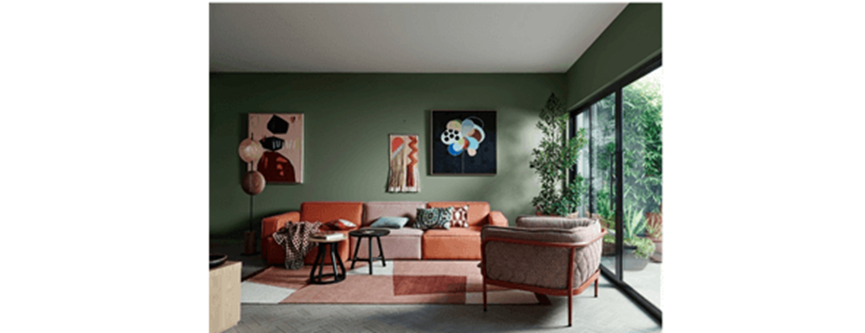
Material Selection: Natural and Sustainable
The materials trend for 2025 is rooted in sustainability, with a preference for natural, recycled, and responsibly sourced elements. Wood is a staple, whether it’s in the form of reclaimed coffee tables or intricately carved shelving. Rattan, bamboo, and cork are other eco-friendly options making waves in furniture and accessories.
Stone, with its timeless elegance, is appearing in unexpected places, from accent walls to minimalist vases. Leather and linen, especially in earthy tones, are being used to craft sofas and cushions that exude understated luxury.
A growing sub-trend is the integration of vintage and upcycled materials. Retro furniture and repurposed industrial elements are not only environmentally friendly but also inject personality into living rooms. Think of a mid-century modern sideboard or an antique brass lamp—each piece tells a story while contributing to sustainable living.
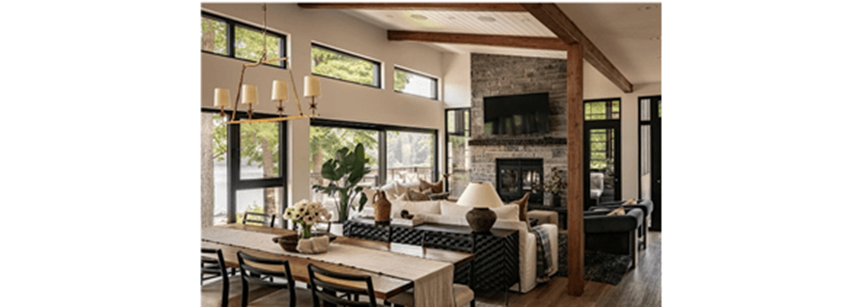
Lighting Selection: Layered and Adaptive
Lighting design prioritizes both aesthetics and functionality. Layered lighting is the key to achieving a dynamic and adaptable atmosphere. Instead of relying solely on overhead fixtures, homeowners are incorporating multiple sources of light: floor lamps, wall sconces, pendant lights, and even under-cabinet LEDs.
Smart lighting systems are more refined than ever, offering the ability to adjust color temperatures and brightness based on the time of day or activity. Morning light mimics natural sunlight to energize, while evening lighting transitions to softer, warmer tones to promote relaxation.
Accent lighting is also a highlight this year. LED strips hidden behind furniture, under shelves, or around artwork frames provide an ambient glow, elevating the mood of any space. It’s all about creating the right balance—an interplay of shadows and highlights that adds depth and sophistication.
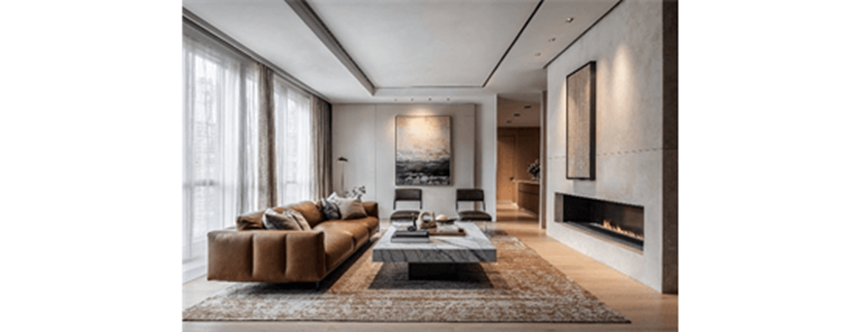
Technology Integration: Smart and Seamless
Living rooms are becoming smarter but not at the expense of aesthetic appeal. The focus is on seamlessly integrating technology so it enhances the space rather than cluttering it. Smart TVs that double as art displays, voice-controlled devices, and hidden charging stations are just a few examples of how innovation is redefining living spaces.
Home automation systems are increasingly intuitive, learning from daily routines to make real-time adjustments. For instance, lights and window shades adjust automatically as daylight changes, while sound systems can adapt their acoustics based on activity—be it a movie night or a quiet reading session.
For tech-savvy households, augmented reality (AR) is also entering the living room. Imagine using AR glasses to visualize how a piece of furniture will look before purchasing or virtually rearranging your space without lifting a finger.
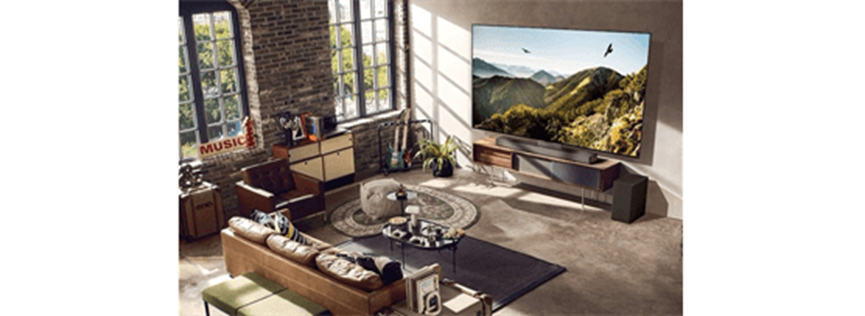
Space Utilization: Multifunctional and Flexible
With homes serving more purposes than ever—office, gym, theater—the living room is all about adaptability. Modular furniture, such as sectional sofas and expandable tables, is essential for optimizing space. These pieces can easily transition between different layouts, whether for work, relaxation, or entertaining guests.
Open-plan living remains popular, but with a twist: zoning. By using area rugs, shelving units, or even changes in flooring, distinct zones are being created within larger spaces. A cozy nook with a statement armchair and a floor lamp can serve as a reading corner, while a sleek console table doubles as a workstation.
For small spaces, foldable and stackable furniture is a game-changer. Hidden storage solutions, such as ottomans with compartments or wall-mounted cabinets, are making it easier to maintain an uncluttered look.
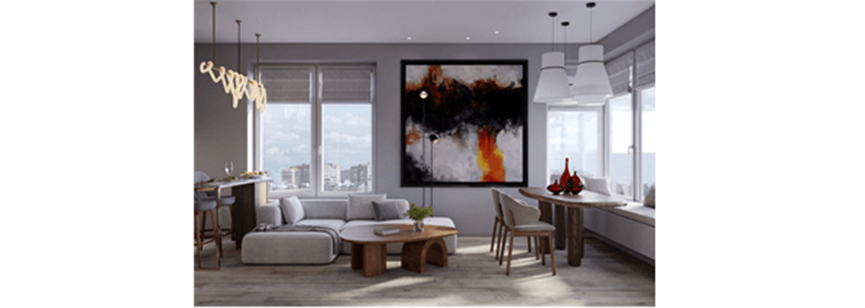
Personal Expression: Curated and Characterful
2025 is all about injecting personality into living spaces. The era of cookie-cutter interiors is fading, replaced by designs that reflect the homeowner’s unique tastes, memories, and interests. This trend celebrates mixing and matching styles—vintage meets modern, industrial pairs with boho chic.
One way to achieve this is through curated collections. Whether it’s a gallery wall featuring eclectic art or a shelf filled with travel mementos, these personal touches make a space feel truly lived in. Statement pieces, such as a bold patterned rug or a sculptural coffee table, also contribute to the sense of individuality.
Textures are playing a big role, too. Layering materials like wool, velvet, and leather adds depth and coziness, making the living room an inviting retreat. Incorporating bespoke or handmade items further emphasizes the importance of craftsmanship and storytelling in design.
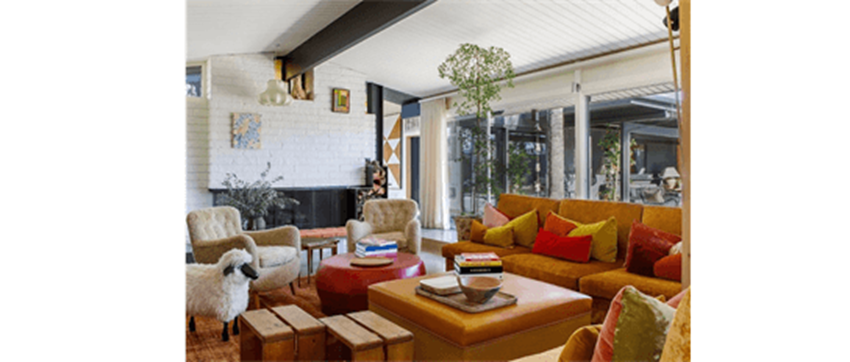
Sustainability and Mindfulness in Design
Another overarching theme is mindfulness. The design process itself is becoming more intentional, with a focus on creating spaces that promote well-being. This includes the use of non-toxic materials, the inclusion of indoor plants for better air quality, and layouts that encourage relaxation and social interaction.
Sustainability is no longer a niche concern; it’s at the core of design philosophy. From energy-efficient appliances to furniture made of recycled materials, every choice reflects a commitment to reducing environmental impact.
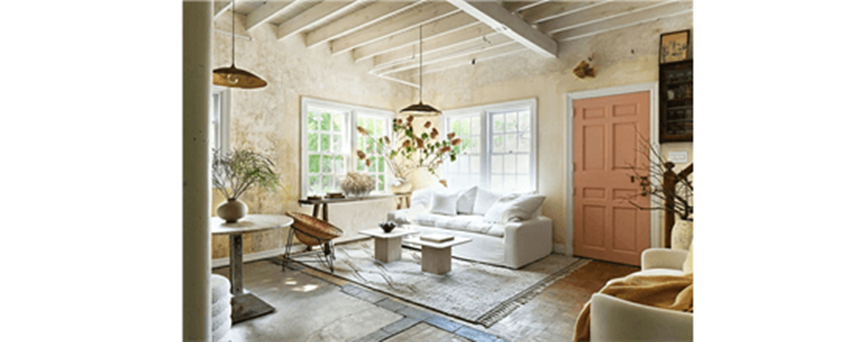
Conclusion: A Vision for the Living Room of 2025
In 2025, the living room is more than just a place to relax—it’s a sanctuary, a workspace, and a canvas for personal expression. By blending warm, earthy colors with natural materials, integrating smart technology, and embracing multifunctional layouts, homeowners are crafting spaces that are as functional as they are beautiful.
The trends of this year celebrate individuality, sustainability, and innovation, ensuring that living rooms evolve alongside the people who inhabit them. As we continue to redefine the heart of the home, the living room stands as a testament to the harmonious interplay between tradition and modernity.
0 Comments
Your comment is awaiting moderation.